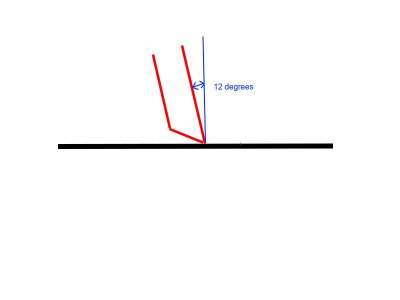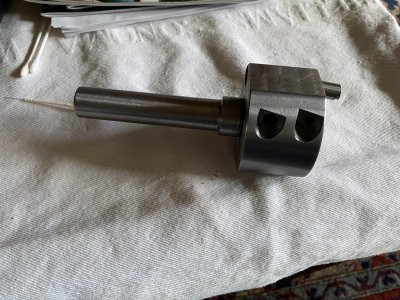I have some follow-up results regarding the tool I made. I noticed that the cutter dulled pretty quickly when machining steel so I made another grinding fixture that puts a 17 degree angle on the HSS rod, rather than 30 degrees. The idea was to get a more-robust cutter by changing the included angle from 60 degrees to 73 degrees. The holder geometry is the same, tilting the rod 12 degrees from the vertical. As a result, the cutter has 5 degrees of back relief relative to the plane of the work.
I haven't tried the new cutter angle on steel, but it doesn't work all that well on aluminum, at least not on material that is wider than the cut path. It sort of shears the aluminum, leaving a rough, raised edge. Multiple passes across the entire surface work OK, but the strange cutting forces don't produce a very good surface finish. I also can tell that the tool is working harder to make the cut. I wasn't going for a high DOC, either -- .005" per pass.
I'll try rotating the cutter in the holder to different angles and see what happens.




